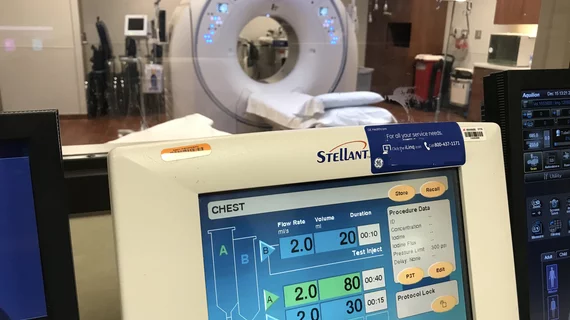Is warming iodinated contrast prior to use really necessary?
Does warming iodinated contrast media prior to administration reduce rates of adverse reactions and extravasations?
Yes and no.
According to a new paper in Clinical Imaging, warming ICM to approximately 37 °C, or 98.6 °F, does not affect extravasation, but it can reduce rates of allergic and physiologic reactions in patients depending on the contrast’s viscosity. For contrast with higher viscosity, warming it first can decrease its viscosity by 50% or more, according to prior data.
In line with that figure, the American College of Radiology Manual on Contrast Media suggests that highly viscous ICM should be warmed to body temperature prior to administration when using high-rate intravenous low-osmolality power injections, viscous iodinated CM, small-caliber catheters, or for timed studies looking at peak enhancement.
However, only limited evidence was available at that time to support warming contrast to prevent certain events like extravasation and reactions, corresponding author Mohamad Nawras, of the University of Toledo College of Medicine and Life Sciences, and co-authors explained.
“The use of warm CM has been suggested as a potential strategy to reduce the risk of extravasations and allergic reactions, although the evidence on the effectiveness of this approach is limited,” the group noted, adding that many institutions have eliminated warming contrast prior to use since it requires additional documentation from the Joint Commission. In turn, this costs departments both time and money.
Given the mixed reviews on whether warming ICM is or is not beneficial, the authors sought to conduct a systemic review to better define the effects of the temperature of ICM. Their meta-analysis included five studies containing data on more than 300,000 contrast injections (86,676 at room temperature and 220,653 warmed).
The data did not indicate a role in temperature when low viscosity ICM was used, but it did highlight a significant dip in allergic reaction rates in highly viscous contrast. There was no link identified between contrast temperature and extravasation rates in either group.
The group concluded that, in addition to current literature, their findings offer further evidence that supports the ACR’s contrast recommendations.
The study abstract is available here.

